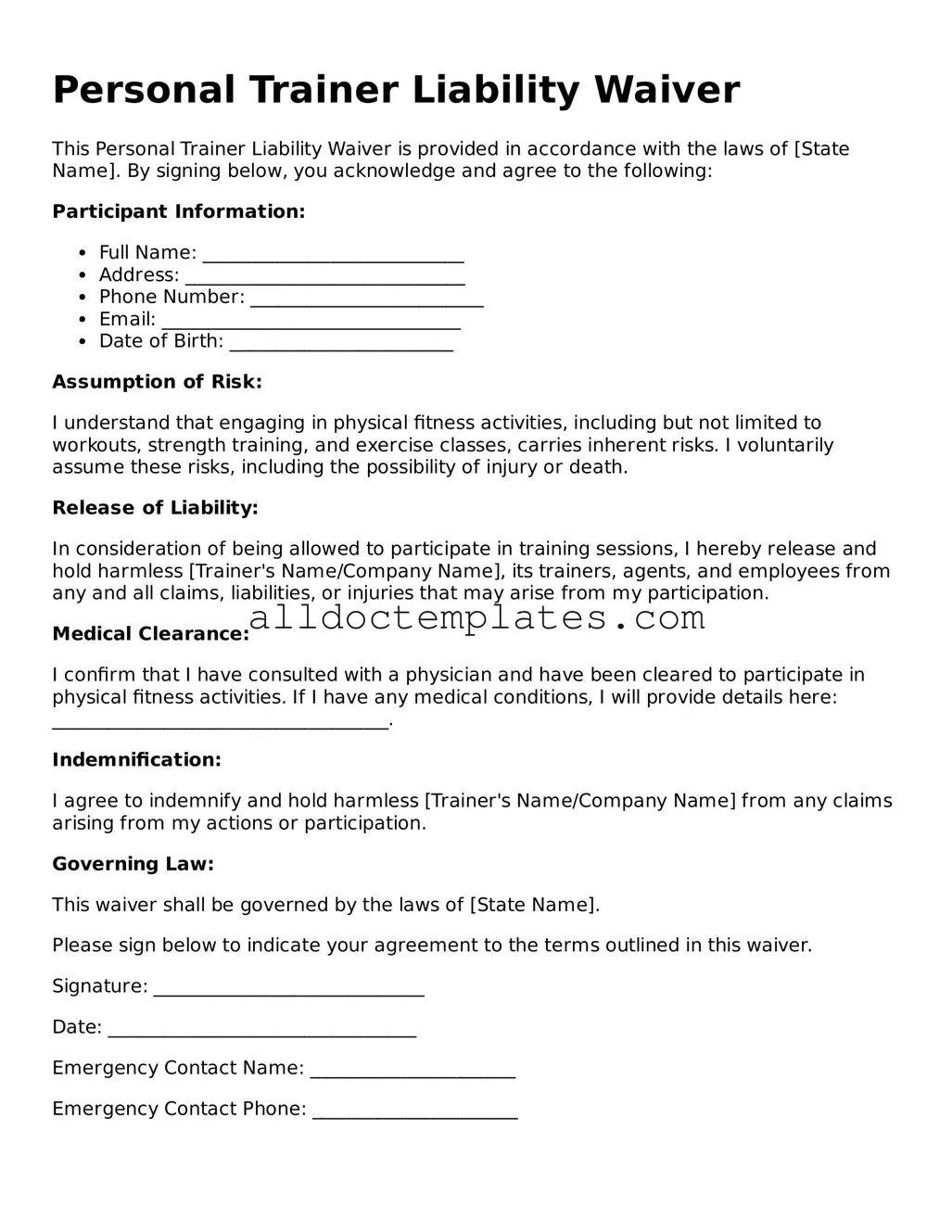Personal Trainer Liability Waiver
This Personal Trainer Liability Waiver is provided in accordance with the laws of [State Name]. By signing below, you acknowledge and agree to the following:
Participant Information:
- Full Name: ____________________________
- Address: ______________________________
- Phone Number: _________________________
- Email: ________________________________
- Date of Birth: ________________________
Assumption of Risk:
I understand that engaging in physical fitness activities, including but not limited to workouts, strength training, and exercise classes, carries inherent risks. I voluntarily assume these risks, including the possibility of injury or death.
Release of Liability:
In consideration of being allowed to participate in training sessions, I hereby release and hold harmless [Trainer's Name/Company Name], its trainers, agents, and employees from any and all claims, liabilities, or injuries that may arise from my participation.
Medical Clearance:
I confirm that I have consulted with a physician and have been cleared to participate in physical fitness activities. If I have any medical conditions, I will provide details here: ____________________________________.
Indemnification:
I agree to indemnify and hold harmless [Trainer's Name/Company Name] from any claims arising from my actions or participation.
Governing Law:
This waiver shall be governed by the laws of [State Name].
Please sign below to indicate your agreement to the terms outlined in this waiver.
Signature: _____________________________
Date: _________________________________
Emergency Contact Name: ______________________
Emergency Contact Phone: ______________________
